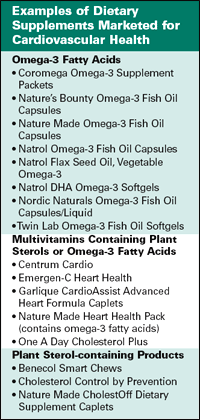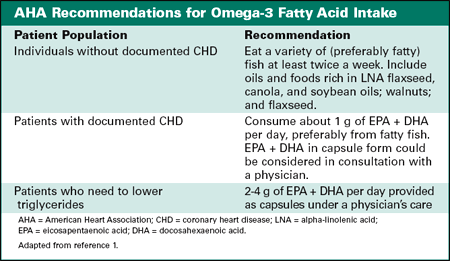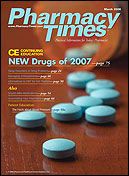Commentary
Article
Pharmacy Times
A Pharmacist's Guide to OTC Therapy: March 2008
Author(s):
Ms. Terrie is a clinical pharmacy writer based in Haymarket,Va.
Treatments for Contact Dermatitis
Contact dermatitis is an acute inflammationof the skin that may be the resultof exposure to irritants or allergens.1
This condition may be classified as irritantcontact dermatitis (ICD) or allergiccontact dermatitis (ACD).1,2 ICD is themost prevalent form of contact dermatitis,accounting for more than 80% of allcases. It is an inflammatory reaction ofthe skin because of exposure to an irritant,such as chemicals, soaps, or varioushousehold cleaning products (Table), andusually resembles a burn.1,2
The majority of ICD cases occur onexposed or unprotected areas of theskin.2 An estimated 80% of ICD casesoccur on the hands, and another 10%involve areas of the face.2 Typically, ICD isassociated more with pain than itching.The most common symptoms includeinflammation, edema, erythema, as wellas crusting and formation of pustules orvesicles.1,2
Table

ACD is an inflammatory reaction of theskin to an allergen, such as poison ivy, oak,or sumac; metal, cosmetics, and the useof some skin-care products also cancause ACD (Table).1-3
The signs and symptoms of ACD mayinclude localized pruritus, rash, pain, andthe formation of blisters.2 DifferentiatingACD from ICD may be difficult, especiallyif the contributing factor is unknown;however, ACD is typically confined to thecontact area, whereas ICD may be morewidespread.4
Many Treatment Options
Hydrocortisone is considered to bebeneficial and the most effective topicaltherapy for treating the symptoms of mildto moderately severe cases of ICD andACD that do not involve widespread dermalareas and edema.2 It should not beused in children younger than 2 years ofage and should not be used for more than7 days, unless directed by a physician.
Other OTC products available for contactdermatitis include topical antihistamines,which can be used for temporaryrelief of pain and itching associated withpoison ivy, oak, and sumac.
Patients should be informed that theuse of topical antihistamine products cancause sensitivity reactions, and theyshould not be used concurrently withother antihistamine-containing products,including oral dosage forms, becauseincreased serum concentrations mayoccur. They should not be applied tolarge areas of the skin.2,5
It also is important to remind patientsthat topical antihistamines should not beapplied to broken, blistered, or oozingskin and should not be used for morethan 7 days, unless otherwise directed.2In addition, external analgesics, such asphenol, menthol, and camphor, whichare available in various dermatologicproducts, may provide antipruritic andanesthetic relief. Astringent products (eg,aluminum acetate, zinc oxide, zincacetate) may promote drying of oozinglesions, as well as provide a protectivecovering for the affected skin.2
Patient Counseling
o n l i n e
For a listing of some OTC productsavailable for contact dermatitis,visit www.PharmacyTimes.com/ContactDermatitis.
Prior to recommending any productfor contact dermatitis, it is imperative forthe pharmacist to ascertain the appropriatenessof self-treatment and referpatients to seek further medical evaluationwhen warranted.
Patients should be instructed on theproper use and duration of the selectedproduct, as well as possible adverseeffects, and pharmacists should remindpatients to contact their primary healthcare provider immediately if there are nosigns of improvement, if symptoms worsen,or if there are any signs of infection.
Table

References
- Dermatological Disorders. In: Beers M, ed: The Merck Manual of Diagnosis and Therapy. 18th Edition. Rahway, NJ: Merck Publishing; 2006:956-958.
- Keefner K. Contact Dermatitis. In: Berardi R, Kroon L, Newton G, et al, eds. Handbook of Nonprescription Drugs. 15th Edition. Washington, DC: American Pharmacists Association; 2006:745-763.
- Contact Dermatitis. MedlinePlus Web site. www.nlm.nih.gov/medlineplus/ency/article/000869.htm.
- Contact Dermatitis. MedicineNet Web site. www.emedicinehealth.com/contact_dermatitis/page3_em.htm.
- Diphenhydramine Drug Information. American Society of Health-System Pharmacists Drug Information Web site. www.medicinescomplete.com/mc/ahfs/current/a382539.htm#cauts.
Dietary Supplements and Cardiovascular Health
Cardiovascular disease (CVD) is theleading cause of death in the UnitedStates among both men and women,and many patients are becoming proactiveabout decreasing their risk byadapting to healthier diets low in saturatedfat and cholesterol and establishingexercise routines.
For more information on dietarysupplements, visit the NationalInstitutes of Health Office of DietarySupplements Web site at dietary-supplements.info.nih.gov.
Many patients also may consider incorporatingthe use of dietary supplements.These supplements includeomega-3 fatty acids, single-entity vitaminformulas, multivitamin products(particularly for cardiovascular health),and products containing plant sterols.
Omega-3 Fatty Acids
Although research investigating therole of omega-3 fatty acids in the reductionof CVD continues, various studieshave demonstrated that omega-3fatty acids can1,2:
- Lower the risk of arrhythmia
- Reduce triglyceride levels
- Lower blood pressure
- Decrease the growth rate of atherosclerotic plaque
- Decrease the incidence of thrombosis
- Improve arterial health
Table

Omega-3 fatty acids are being studiedin a variety of other medical conditionsas well. The American HeartAssociation (AHA) recommends theconsumption of omega-3 fatty acidsfrom fish and plant sources at leasttwice a week (Table). Fatty fish contain2 kinds of omega-3 fatty acids: eicosapentaenoicacid (EPA) and docosahexaenoicacid (DHA). Tofu and otherforms of soybean, walnuts, flaxseed,and canola oils contain alpha-linolenicacid, which can become omega-3 fattyacids in the body.1
Although the consumption of omega-3 fatty acids through diet is the preferredoption, some patients may electto use omega-3 dietary supplementsbecause of personal preference orinability to consume enough omega-3fatty acids through diet alone.
Currently, a variety of omega-3 fattyacid supplements are available in variousdosage forms and strengths. Patientswith existing medical conditionsand those taking any medicationsshould always discuss the use of thesesupplements with their primary healthcare professional prior to use. Patientswith allergy or hypersensitivity to anyof these products should avoid them.Common adverse effects include acidreflux/heartburn/indigestion, nausea,diarrhea, and increased burping.3,4Gastrointestinal side effects can beminimized if fish oils are taken withmeals and if doses are started low andgradually increased.3
The use of omega-3 supplementshas been associated with interactionswith certain drugs. Examples includeaspirin, anticoagulants, antiplateletagents, and some herbal supplements.3,4 In addition, caution should beexercised by diabetics, because fish oilsupplements may slightly lower bloodglucose.3,4
o n l i n e
For a listing of some of the dietarysupplements currently on the marketfor cardiovascular health, visitwww.PharmacyTimes.com/CVsupplements.
Patients who take >3 g of omega-3fatty acids from capsules should do soonly under a physician's care—highintake could cause excessive bleedingor worsen heart rhythm in patientswith arrthymias.1,5 Prolonged use offish oil supplements may cause a deficiencyof vitamin E; therefore, vitamin Eis added to many commercial fish oilproducts.3,6 Regular use of vitaminE?enriched products may lead to elevatedlevels of this fat-soluble vitamin,so patients should be monitored.3
Plant Sterols
Various clinical studies report thatdietary intake of plant sterols is effectivein lowering low-density lipoprotein(LDL) cholesterol levels. The bestdietary sources of plant sterols arevegetables, seeds, and nuts; however,supplements containing plant sterolsalso are available. According to theAHA, key facts about plant sterols/stanols include7:
- They may be beneficial for individuals with elevated LDL cholesterol
- Maximum effects have been observed at intakes of 2 g/day
- Daily consumption is necessary to sustain LDL reductions
Table

References
- Fish and Omega-3 Fatty Acids. American Heart Association Web site. www.americanheart.org/presenter.jhtml?identifier=4632.
- New guidelines focus on fish, fish oil, omega-3 fatty acids. American Heart Association Web site. www.americanheart.org/presenter.jhtml?identifier=3006624.
- Omega-3 Fatty Acids, Fish Oil, Alpha-linolenic Acid. Medline Plus Web site. www.nlm.nih.gov/medlineplus/druginfo/natural/patient-fishoil.html.
- Omega-3 Fatty Acids. Drug Digest Web site. www.drugdigest.org/DD/DVH/Uses/0,3915,8747%7COmega%252D3%2Bfatty%2Bacids,00.html.
- Omega-3 Fatty Acids: A Way to Improve Heart Health. Mayo Clinic Web site. www.mayoclinic.org/news2007-mchi/4219.html.
- Omega-3 Fatty Acids, Fish Oil, Alpha-linolenic Acid. Mayo Clinic Web site. www.mayoclinic.com/health/fish-oil/NS_patient-fishoil.
- Association releases new diet and lifestyle recommendations. American Heart Association Web site. www.americanheart.org/presenter.jhtml?identifier=3040209.







